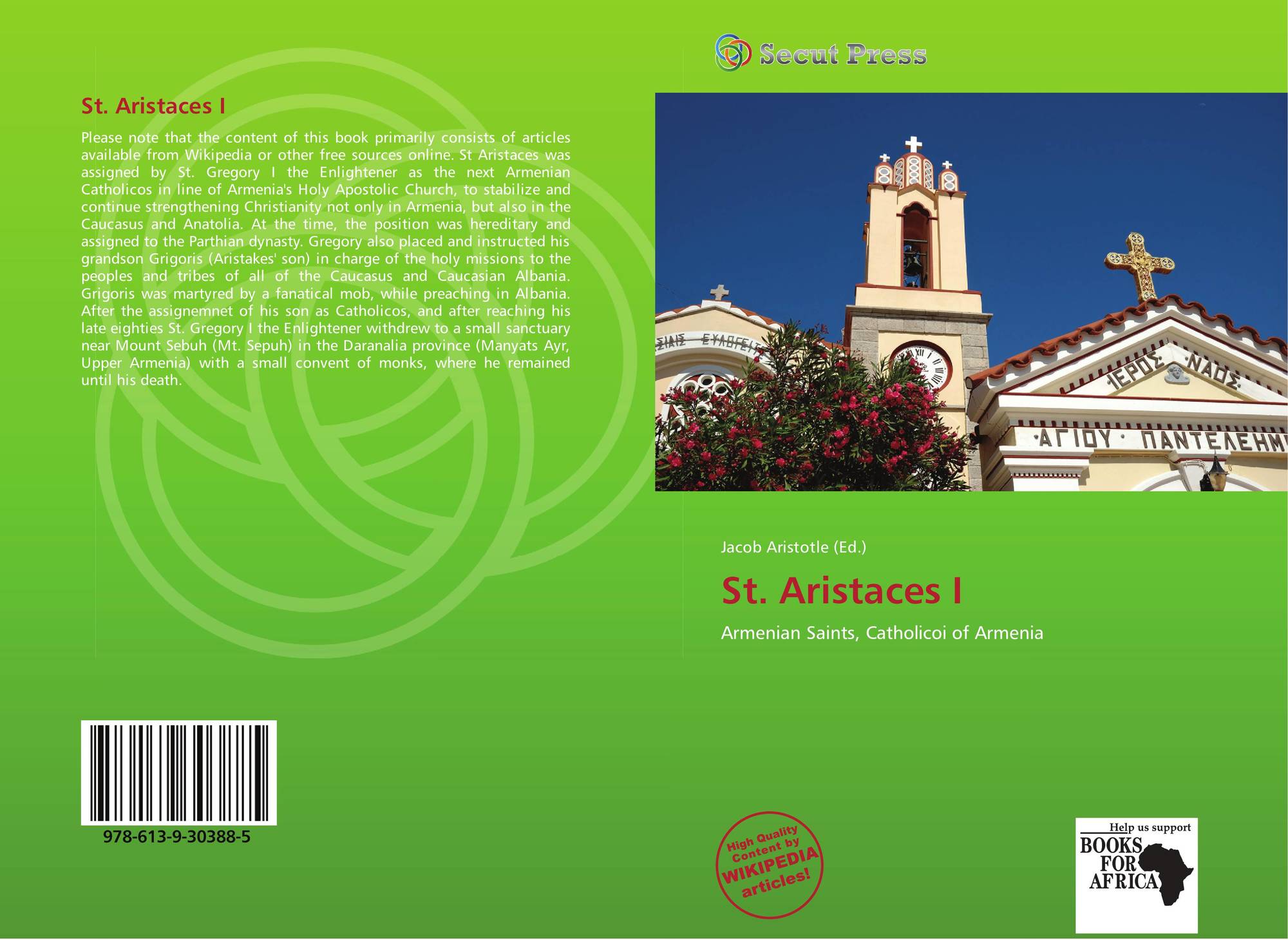St. Aristaces I
St. Aristakes I., also called " Aristarkes Parthev " ( the Parthians ), ( Armenian Սբ Արիստակես Ա Պարթեւ. . ) (C. 261, † 327/333 ) was from 320/325 bis 327/333 AD, as a successor of Gregory the Illuminator, the second Catholicos ( Patriarch ) of the Armenian Apostolic Church and is revered by their followers as a saint.
Origin
Aristakes came from the family of Suren - Pahlav, a branch line of the Arsacid, the great kings of Persia and 54-428 AD kings of Armenia were. He was the younger son of his father, of St. Gregory the Illuminator. This was the first Catholicos ( Patriarch ) of the Armenian Apostolic Church, where he was able to make Armenia with the help of the converted him king ( Tiridates III) for the first Christian state, which is therefore venerated as the apostle of Armenia. From his mother, a Christian woman, only the first name Mariam, but not the origin is known.
Life
Aristakes grew up in Caesarea in Cappadocia (now Kayseri in Turkey) on, was there educated and spiritually ordained a priest. Later he was consecrated as bishop there and worked first as coadjutor of his father. Aristarkes however, was determined by his father to succeed him, creating a system of heredity of the highest spiritual function was established by the office of Catholicos was administered to 439 members of the family of Gregoriden (descendants of Saint George the Illuminator ).
Aristakes followed - depending on the source - in the year 320 or 325 as the second Catholicos of the Armenian Apostolic Church on his father, after he had retired from his position in order to end his life in solitude - last (331 AD) in a cave at the foot of the mountain Sebuh in Upper Armenia - where he died after a few years (325? ). Aristakes made successful efforts as head of the Armenian Church to strengthen Christianity not only in Armenia, but also in the Caucasus and Anatolia.
From Tiridates III, King of Armenia ( 285 -. C 330). Called "the Great" or " the Holy " because he created the material foundations of the Armenian Church, Aristakes was - the grandson of Anak Suren - Pahlav, of whose had murdered father, King Khosrov II ( Tiridates II ) at 252 - 325 as the representative of Armenia for the first ecumenical council of the Christian Church, the First Council of Nicaea ( May 20 to July 25 325) seconded. There were primarily to settle the dispute has broken out in Alexandria with Arianism over the nature of Christ and to the formulation of the nicäanischen creed. For King Tiridates it was about probably also to the strengthening of relations with the Roman Empire and Emperor Constantine I " the Great " by also expected to consolidate its domination of the underline the commonality of religion.
No concrete contribution to the deliberations of the Council of Aristakes is known, however, it is mentioned in the Acts of the Council under the present church representatives as Aristanes or Aristakios.
Despite the efforts of the Patriarch to Christianity was still far from having overcome the resistance of the mass of the rural population or to the representative of the feudal nobility, as these were based on the ancient native paganism to the power of the king and the influence of Church to oppose. This went so far that the head of the Armenian Church, Catholicos St. Aristakes was murdered by 333 of a nobleman in the district Dzophq ( Sophanene ).
Marriage and children
Aristakes was married to a woman whose name and origin are unknown. With her he had at least two sons.:
- Grigoris ( Gregor ), Patriarch of Iberia ( 317-335 ).
- Yousik, Catholicos of the Armenian Apostolic Church ( 342-348 )



BPuH(i3Gzw~~/s-l300.jpg)



_-_San_Gregorio_armeniaco_-_Foto_G._Dall%2527Orto_26-5-2006.jpg/240px-Istanbul_-_Chiesa_Pammacaristos_(Fetiye_camii)_-_San_Gregorio_armeniaco_-_Foto_G._Dall%2527Orto_26-5-2006.jpg)


